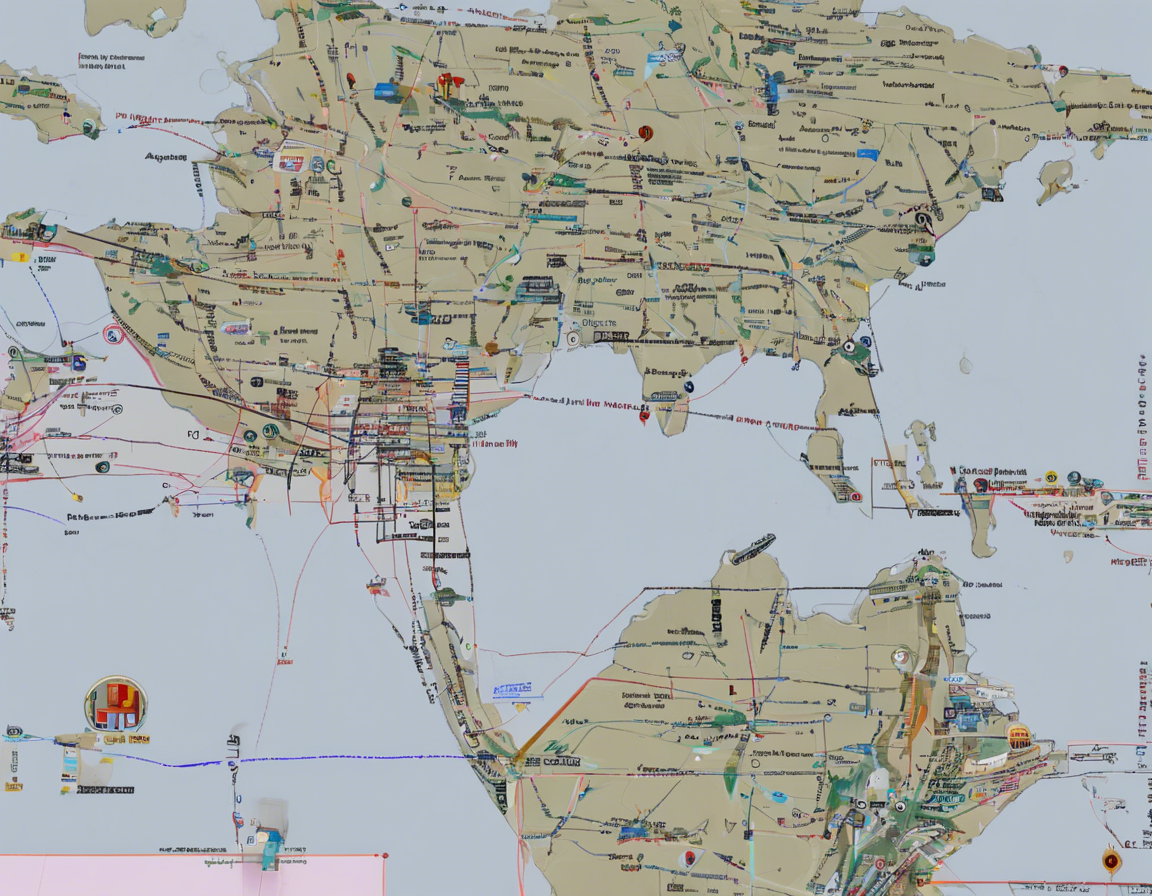When it comes to precision measurement in engineering, calculating pin-to-pin distance is a fundamental task with wide-ranging applications in various fields such as mechanical engineering, civil engineering, electronics, and many others. Pin-to-pin distance refers to the measurement of the distance between two specific points, often on a component or a structure, using precise tools and techniques. This article aims to provide a comprehensive guide on how to accurately calculate pin-to-pin distance, including the tools required, the methods employed, and the importance of precision in engineering measurements.
Understanding Pin-to-Pin Distance
In engineering, the term “pin-to-pin distance” commonly refers to the linear distance between two designated points, typically the center points of pins or connectors. This measurement can be crucial in various scenarios, such as determining the alignment of components, ensuring proper fit and clearance, and assessing the overall dimensions of a system or structure. Accurate pin-to-pin distance calculations are essential for achieving precise and reliable results in engineering design, assembly, and quality control processes.
Tools for Pin-to-Pin Distance Measurement
1. Calipers
Calipers are versatile tools used for measuring distances between two points with high precision. Digital calipers are especially useful for pin-to-pin distance measurements due to their accuracy and ease of use.
2. Micrometers
Micrometers are precise instruments that provide accurate measurements of small distances. They are ideal for measuring the diameters of pins or holes, which can be essential for calculating pin-to-pin distances.
3. Coordinate Measuring Machines (CMM)
CMMs are advanced measurement devices that use probes to capture precise 3D coordinates. CMMs are highly effective for measuring complex geometries and performing accurate pin-to-pin distance calculations in industrial settings.
4. Optical Comparators
Optical comparators use light and lenses to magnify and measure the dimensions of a part. They are useful for visually inspecting and measuring pin-to-pin distances in components with intricate details.
Methods for Calculating Pin-to-Pin Distance
1. Direct Measurement
The most straightforward method is to use a caliper or a micrometer to measure the distance between the two pins directly. Ensure that the measurement is taken from the center points of the pins for accuracy.
2. Coordinate Measurement
For more complex geometries or larger distances, using a Coordinate Measuring Machine (CMM) can provide precise 3D coordinates for calculating the pin-to-pin distance.
3. Optical Measurement
In cases where visual inspection is required, an Optical Comparator can be used to measure the distance between pins accurately. This method is particularly useful for assessing the alignment of pins in electronic components.
Importance of Precision in Pin-to-Pin Distance Calculations
Accurate pin-to-pin distance calculations are crucial for the following reasons:
1. Proper Fit and Functionality
Ensuring precise pin-to-pin distances guarantees that components fit together correctly and function as intended, avoiding issues such as misalignment or interference.
2. Quality Control
In manufacturing processes, verifying pin-to-pin distances helps maintain quality standards and prevents defects that may arise from incorrect dimensions.
3. Performance Optimization
Optimizing pin-to-pin distances can enhance the overall performance of a system, whether it is a mechanical assembly or an electronic circuit, by maximizing efficiency and reliability.
4. Compliance with Specifications
Meeting specified pin-to-pin distances is essential for compliance with design requirements, codes, and standards, ensuring that the final product meets regulatory guidelines.
Best Practices for Accurate Pin-to-Pin Distance Measurements
To ensure precise and reliable pin-to-pin distance calculations, consider the following best practices:
1. Use High-Quality Measurement Tools
Invest in calibrated and high-precision measurement tools to reduce errors and improve the accuracy of your measurements.
2. Establish a Standardized Procedure
Develop a standardized measurement procedure that includes clear guidelines on how to measure pin-to-pin distances consistently across different components and projects.
3. Verify Results and Cross-Check Measurements
Double-check your measurements and compare them against known references to validate the accuracy of your pin-to-pin distance calculations.
4. Consider Environmental Factors
Take into account environmental factors such as temperature variations, vibrations, and dust, which can affect measurement accuracy, especially in sensitive applications.
5. Document and Record Measurements
Maintain detailed records of your pin-to-pin distance measurements, including the methods used, the tools employed, and any deviations from expected values for future reference and analysis.
Frequently Asked Questions (FAQs) About Calculating Pin-to-Pin Distance
1. What is the significance of measuring pin-to-pin distances in PCB design?
In PCB design, measuring pin-to-pin distances ensures proper spacing between components to prevent short circuits and ensure signal integrity.
2. Can software tools be used for calculating pin-to-pin distances?
Yes, there are software tools available that can assist in calculating pin-to-pin distances based on 3D models or drawings of components.
3. How does temperature variation affect pin-to-pin distance measurements?
Temperature changes can cause materials to expand or contract, potentially altering pin-to-pin distances. Compensation techniques or temperature sensors may be used to account for this effect.
4. Why is it essential to measure pin-to-pin distances in precision machining?
In precision machining, accurate pin-to-pin distance measurements help achieve tight tolerances, ensuring parts fit together correctly and function properly in the final assembly.
5. What is the role of tolerance analysis in pin-to-pin distance calculations?
Tolerance analysis assesses the allowable variations in pin-to-pin distances to determine if the components will function correctly within specified tolerances.
In conclusion, calculating pin-to-pin distance is a critical aspect of precision measurement in engineering, requiring the use of accurate tools, meticulous methods, and a commitment to achieving reliable results. By understanding the importance of pin-to-pin distance calculations, adopting best practices, and leveraging advanced measurement techniques, engineers can ensure the integrity, functionality, and quality of their designs and products.
